Quick Guide to Cleaning Agents

.png)
The pandemic has emphasised the value of keeping everything clean and sanitised.
Let’s start with some basics.
- The difference between cleaning vs disinfecting vs sanitising
- The difference between detergent vs disinfectant vs sanitiser
- Safety precautions when handling cleaning agents
- What commercial cleaning chemical to use (for the job)
Cleaning vs disinfecting vs sanitising
We’ve seen many people use these terms interchangeably, but they’re not the same thing. Here are the basic differences between the three, according to MedlinePlus.gov:
- Cleaning is basically the physical removal of debris, dirt, dust, grime, pathogens and other visible impurities -- usually using detergents and water -- by scrubbing the surface. This may not be enough to kill all the germs, but even so, should always be the first step in any sanitation routine.
- Disinfecting is basically the eradication of the germs by immersing the surface in chemicals called disinfectants for a certain amount of time (which varies). It is best done after cleaning.
- Sanitising is essentially reducing the number of germs possibly present in the surface to a “safe level”, either by cleaning, disinfecting or doing both. The “safe level” standard may vary, depending on the public health standards and requirements that apply to a certain scenario.
Important:
- The surface must first be thoroughly cleaned before sanitising.
- Clean and sanitise food contact surfaces only with food safe chemicals. Do this after every use of the surface, utensils and equipment.
Here’s a snapshot of a fact sheet by the Gladstone Regional Council:
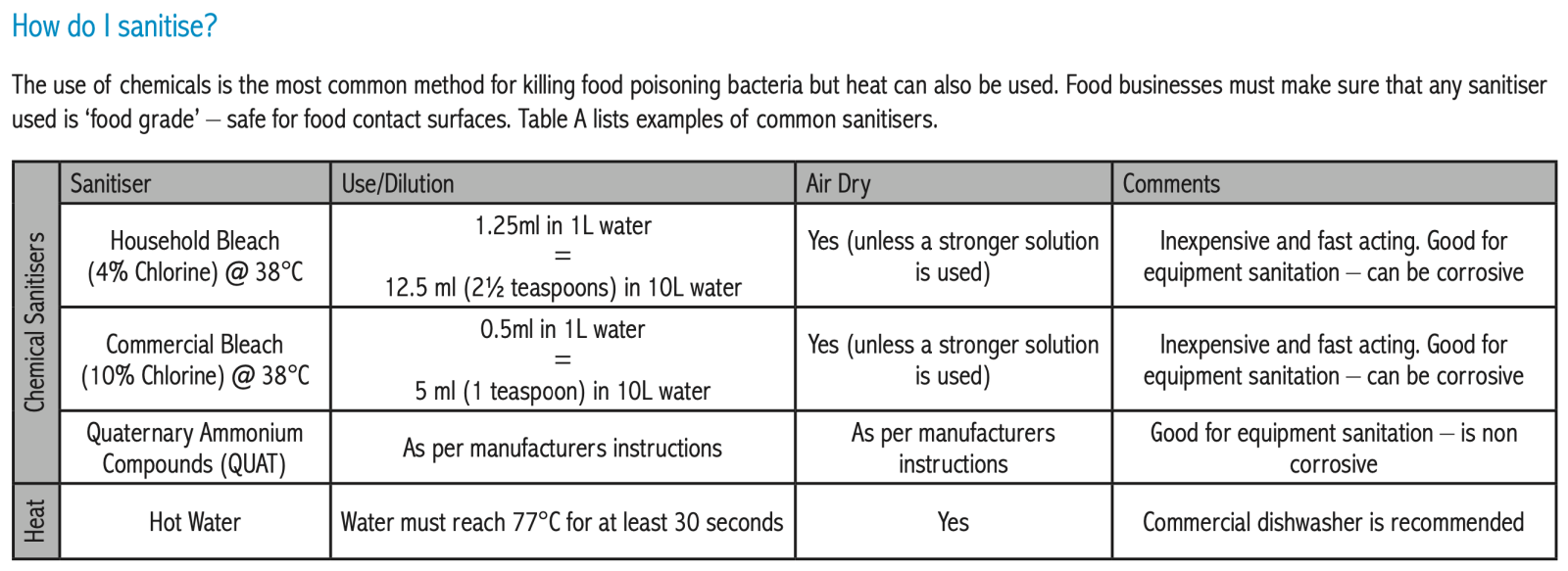
Detergent vs disinfectant vs sanitiser
- Detergent is a surfactant (or a mixture of it), usually in the form of liquid soap, and is sometimes intended to be diluted in water. It is formulated to wash away debris, dirt, dust, grime, pathogens, and other visible impurities from the surface. They are not necessarily designed to kill bacteria.
- Disinfectant is an antimicrobial chemical formulated to eradicate and significantly reduce the presence of microorganisms and pathogens (eg. bacteria, fungi, and viruses) on hard surfaces and in the water. It is not intended for use on food contact surfaces.
- Sanitiser is a chemical that is used “after detergents” to eliminate bacteria and spores on the surface. For food preparation and storage, be sure to use “food-grade” sanitisers, marked accordingly.
Safety precautions when handling cleaning agents
Train your staff / users in safe chemical handling:
Make sure they know how to properly prepare, use and store all the various cleaning agents in your inventory. They should be aware that those substances must be handled with care, keeping in mind that cleaning agents generally:
- May be irritants, so it’s best to avoid direct skin contact
- May be poisonous, so avoid ingesting them
- May be flammable, so keep them away from potential sources of combustion
- Must be labelled appropriately, according to safety standards
In addition, they should know what to do in cases of an emergency related to using cleaning agents. For instance, they should have read (and know where to locate) the safety data sheets (SDS) in case they need safety information.
Know your (cleaning) chemicals:
Don’t automatically assume that the detergent, disinfectant and sanitiser are safe for skin contact.
According to Comcare, in general, if you are not sure if a chemical is safe:
- Treat any unknown substance as a hazardous chemical, until it is proven not to be hazardous.
- Notify your manager if you encounter an unknown and unlabeled chemical or substance.
The person conducting a business or undertaking (PCBU), who is usually the employer, is responsible for identifying the chemical and (1) obtaining appropriate safety information for it, or (2) safely disposing of the unknown chemical.
It is even cited as an example in the Work Health and Safety (Managing Risks of Hazardous Chemicals in the Workplace) Code of Practice 2015 under the section “Consulting, co-operating and co-ordinating activities with other duty holders”:
“For example, if you engage a contractor to carry out cleaning at your workplace that involves the use of chemicals, you should find out what is being used, whether there are any hazards associated with the chemicals and how the risks will be controlled. This might, for example, include jointly preparing a risk assessment for the chemicals being used, how they will be handled and measures that should be taken to eliminate or minimise exposure. After the risk assessment has been prepared, it is important for all duty holders to co-operate and co-ordinate activities with each other to implement the control measures.”
Of course, this also applies to your business if it’s your staff handling the cleaning agents themselves.
Important: Be more cautious when cleaning surfaces and equipment related to food processing. Make sure the cleaning agents that you use are “food safe”. You don’t want residues coming in contact with ingredients and raw materials.
Be aware of existing health issues amongst your workforce:
As you know, cleaning agents may contain strong formulations which could be harmful to users with pre-existing conditions, such as asthma.
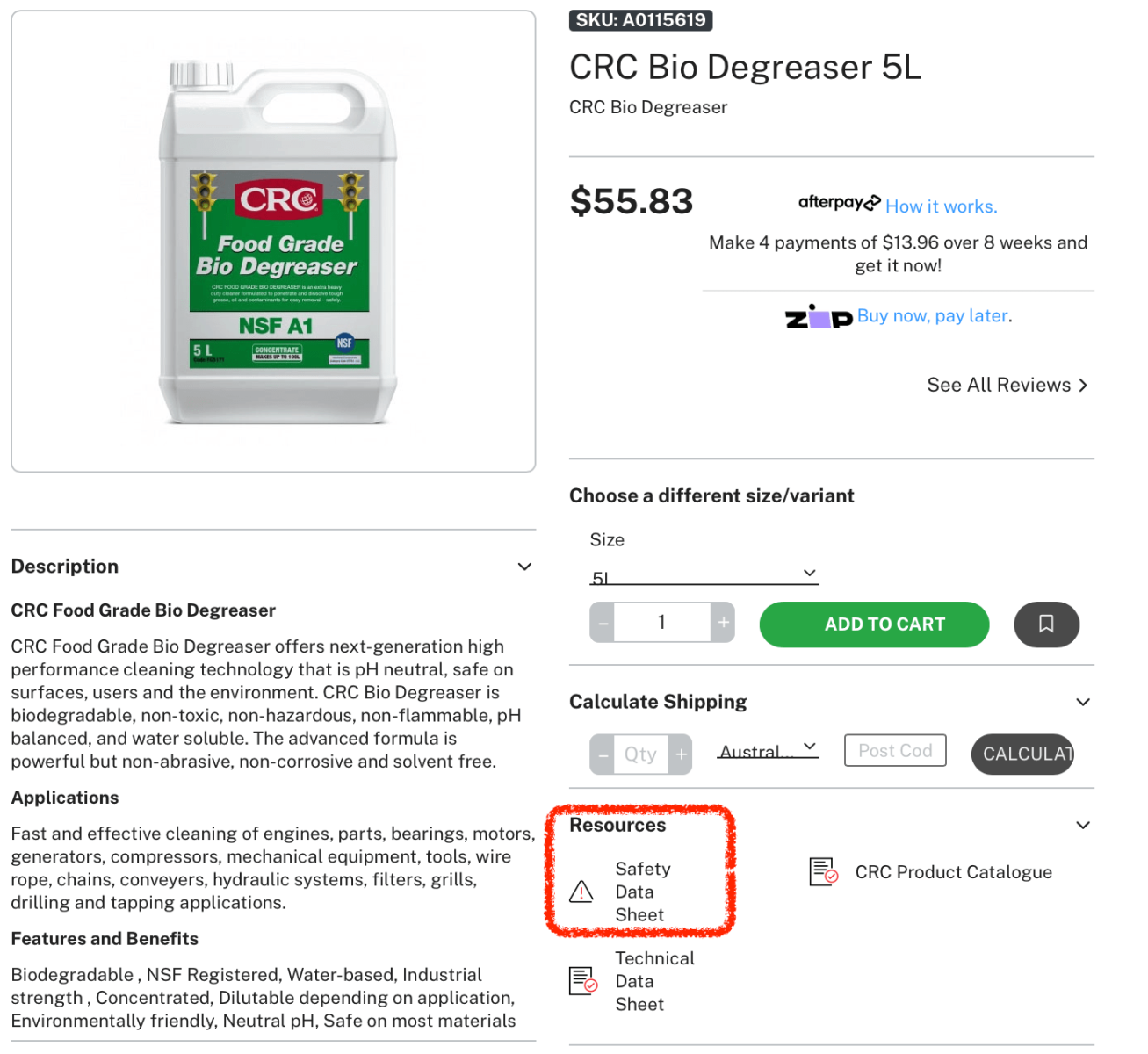 Read and understand the SDS:
Read and understand the SDS:
As defined by Safe Work Australia (SWA), this document contains information about a hazardous chemical, its health and environmental risks, incompatibilities (with other chemicals), exposure standards (for airborne contaminants), what to do in case of accidental spills, first-aid information and how to safely handle, transport and storage the product in question.
As a PCBU, you are required by the SWA to refer to SDSs to keep your workers safe.
All relevant cleaning products listed on our website should have links to current Safety Data Sheets, as provided by the manufacturer.
Shown is a CRC bio-degreaser, where the link to the product's SDS is highlighted
Read the label:
Always read the instructions on the chemical container and packaging before using the product. Although this is not a replacement to the SDS, the information provided here usually cites, in layman’s terms, the practical guidelines for the user.
Also shown on labels are (1) ingredients (eg. allergens) that may be harmful to some people with pre-existing health conditions, and (2) what to do when the product has made direct skin contact or was accidentally ingested.
Obviously, if there is no label on the product, then you will have no basis for knowing if it’s safe to use or not. This often happens when the chemicals are stored in a different container to the original.
Store chemicals appropriately:
Speaking of which, it’s important to keep the cleaning agents in the original container they came in. A lot of them will come in hard plastic bottles and metal cans. What you put in those bottles is not necessarily interchangeable.
Aside from the fact that some chemicals are strong enough to melt plastic, you also don’t want to top up a container with a different chemical.
You never know if you’re in for a bad surprise when the incompatible chemicals react.
In addition, put “Dangerous Good” signs on the cabinets where you store cleaning agents.
Here’s more information from the SWA on why it is important to safely store hazardous chemicals.
Don’t mix and match chemicals:
Chemical experiments are best left with chemists who know what they’re doing. Unless you’re one, don’t play with chemicals.
In a household setting, here are some known bad combinations of chemicals you should not mix, according to Reader’s Digest:
- Bleach and alcohol
- Bleach and ammonia
- Bleach and multi-purpose cleaners
- Bleach and mold, mildew and stain removers
- Bleach and oven cleaners
- Bleach and vinegar
- Different drain cleaners
- Hydrogen peroxide and vinegar
As you may have noticed, bleach doesn’t get along very well with other substances, aside from water.
In a commercial setting, you may be working with even stronger chemicals that are formulated to deal with tougher, heavy-duty applications. Therefore, take extra precautions by using the correct personal protective equipment (PPE).
Wear PPE as appropriate:
Not all cleaning agents are safe for skin contact. At the very least, wear disposable gloves and some basic eye protection, as the liquid may splash all over and into the eyes.
Trust your nose and throat when they feel irritated; that usually tells you it’s time to wear a mask to avoid (or at least significantly limit the amount of) chemicals and fumes from being directly inhaled. As with all safety related issues, always err on the side of caution. “Too much” PPE is better than too little, so long as it does not inhibit your movement excessively.
Make sure there is proper ventilation where you’re cleaning:
Most disinfectants and aerosol cleaners should be left to air-dry. Some are meant to be soaked into the surface for quite some time before rinsing.
Consequently, fumes may accumulate in the room, so you should have an easy way to ventilate them out into open air.
Don't smoke while cleaning:
Speaking of fumes, you never know exactly what’s combustible, so save the cigarette for later. (As if it’s not hard enough to puff one with the wet gloves on.)
Wash your hands after cleaning:
If you think soap and water are enough, think again. Even when you’ve worked with gloves on, your hands probably still made some contact with chemicals and surfaces. Clean them properly with hand cleaners specially formulated for the job.
What commercial cleaning chemical to use?
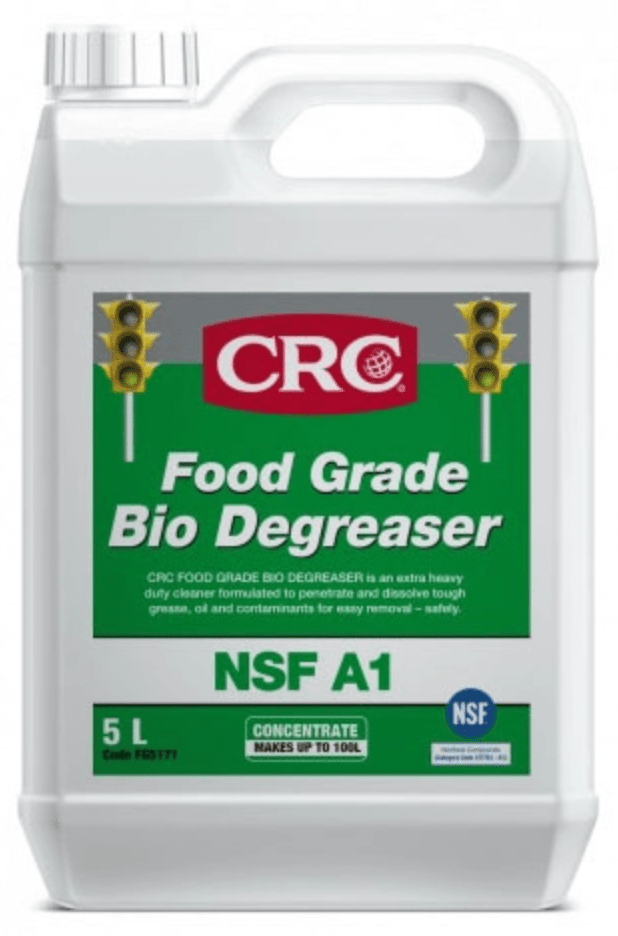 While some household cleaning best practices are universally applicable, there are other precautions that a business should take, depending on their industry.
While some household cleaning best practices are universally applicable, there are other precautions that a business should take, depending on their industry.
For instance, if you’re in food processing and it’s time to clean your equipment, make sure to use only food grade products, such as this bio-degreaser by CRC.
Here’s a short list:
- Detergents and surface cleaners: Used in light duty applications to remove visible dirt, grime and stains from most surfaces. Some are even specially formulated to remove lime, rust and oil stains
- Disinfectants and sanitisers: Used in light and medium duty applications to provide residual protection on most surfaces, equipment and tools
- Wood furniture polishes and waxes: Formulated to be applied to clean and restore wood finishes
- Contact cleaners: Formulated to get rid of contaminants from sensitive electrical and electronic parts
- Degreasers: Formulated to clean the dirt, grease, oil and grime build-ups off surfaces and equipment
Other cleaning chemicals, equipment and supplies
Aside from the cleaning agents mentioned above, you may also want to check other related cleaning products.
For general cleaning routines:
- Brooms, dustpans, brushes, scrubs and other accessories
- Dispensers, sprayers and pumps
- Vacuum cleaners
- Rags and wipes
For components and automotive applications:
(Here's a quick guide to spring-cleaning your car.)
In a nutshell
- Train your staff / users in safe chemical handling.
- Know which chemicals you’re dealing with.
- Read the safety data sheets.
- Read the label.
- Don’t experiment, mix and match or ‘play’ with cleaning chemicals.
- Wear PPE as appropriate.
- Use the right cleaning agents for the job.
- Wash your hands after cleaning.
Put simply, use your common sense and always err on the side of caution.
AIMS' Note on Safe Use of Parts Washers and Parts Cleaning Chemicals
- Protective gear: Protect your skin and eyes! Wear chemical-resistant gloves to prevent skin irritation or absorption of chemicals. Safety glasses or goggles provide essential eye protection. Additionally, consider using a respirator if fumes are particularly strong or you are working for an extended period.
- Labels and instructions: Before using any product, carefully read the instructions and safety warnings on the label. Follow the specific guidelines for usage, proper handling and disposal. Check for ‘use by’ dates.
- Fire hazards: Many parts cleaners and lubricants are flammable. Keep them away from open flames, heat sources, and anything that could cause a spark. Store these products in a cool, dry location in their original containers, out of the reach of children and pets.
- Environment: Choose less toxic and environmentally friendly options whenever possible. Make sure there are no open flames or anything that can ignite flammable substances. Dispose of used products and empty containers responsibly according to the instructions or your local hazardous waste guidelines.
- Ventilation: When working with chemicals that release strong fumes, always work in a well-ventilated area, preferably outdoors or in an open area. If you are working indoors, make sure that the windows are open and consider using fans to increase airflow and disperse / vent out the fumes.

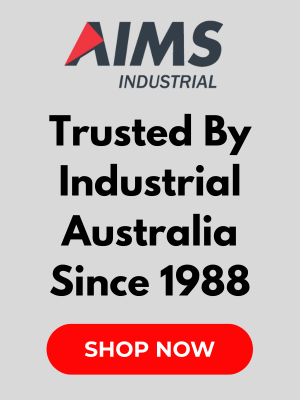
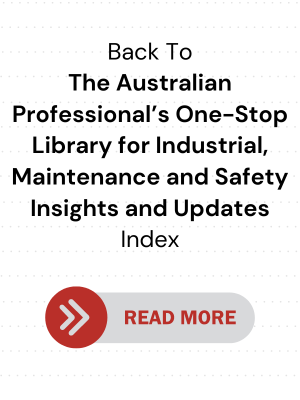
.png)